Equipment
Remember these great golf balls of years past?
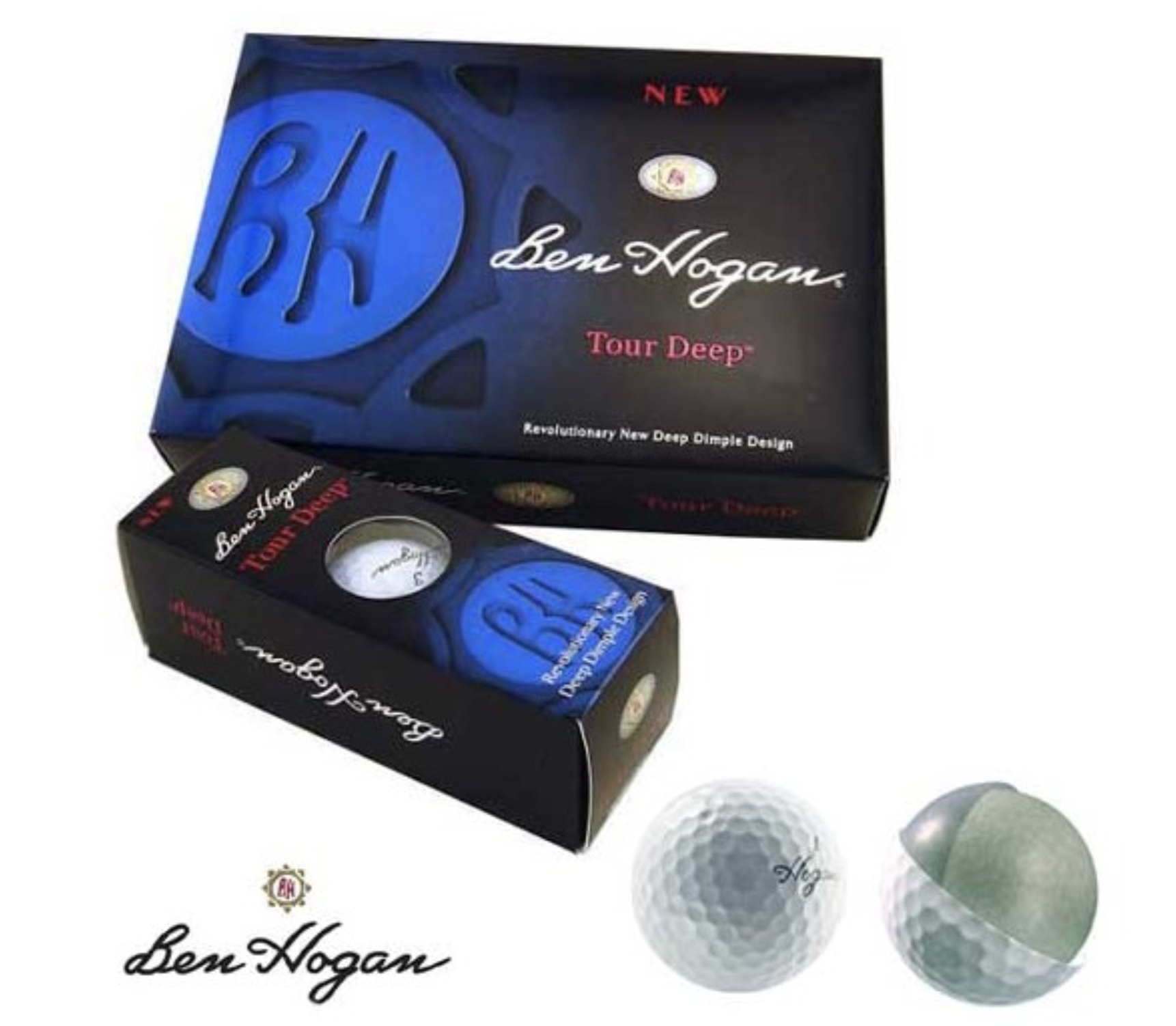
When it comes to classic gear, few pieces of equipment stir up as much conversation as golf balls, especially in the modern era when talking about distance and short game control specifically. Just like clubs, they are carefully constructed and designed to fit certain swings and provide performance benefits for different types of golfers.
Some well-known brands have been around for over a half-century, and in the case of the Titleist Pro V1, has remained the staple by which all other modern golf balls have been judged. But this list isn’t about new, it’s about the forgotten.
Here are some of the forgotten greats of the past two decades.
Strata Tour Ace
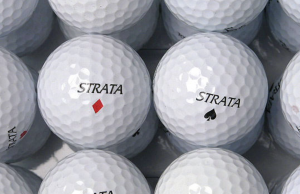
Best known as the ball used by Jim Furyk to win the 2003 U.S. Open, the Strata Tour Ace was a four-piece urethane ball with a very soft cover that allowed for what Strata called “one hop and stop” spin around the greens.
One quirky way to quickly distinguish the Tour Ace from other balls in the Strata lineup was the use of card suites instead of numbers to identify balls that came in a sleeve—it also allowed you to really flush one (dad joke, I’ll see myself out).
Maxfli Revolution Solid
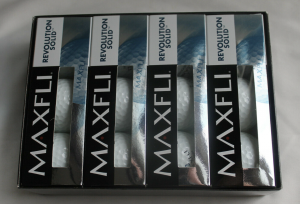
Introduced in the early 2000s to compete with the Pro V1, the Maxfli Revolution Solid was engineered to provide improved distance without sacrificing approach or around-the-green spin. It was a three-piece ball that featured an oversized core and urethane cover. What also made the Maxfli Revolution interesting is that its main endorser was none other than Jack Nicklaus.
TaylorMade InerGel
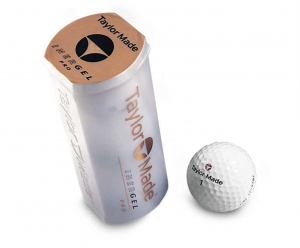
The golf ball made more famous for its packaging than its performance, the InerGel was the first TaylorMade golf ball to market. What really made it stand out was the plastic tube the balls came in to help prevent them from being exposed to moisture (hey, it was an angle).
TaylorMade R&D estimated that golf balls had the potential to lose as much as six yards in distance by being exposed to moisture and this was one way to prevent that from happening. Although it was never a big seller, the InerGel tubes lived on for a long time carrying tees and other things in a lot of golfers’ bags.
Callaway HX Tour 56 (Hogan Tour Deep?)
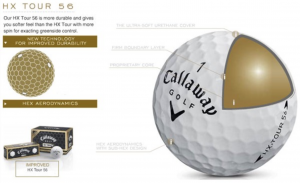
The HX Tour 56 was the softer brother to the original HX Tour (also referred to as the HX Black) and offered an extremely soft feel and higher spin around the greens. The Tour 56 was introduced the second year after Callaway bought Top-Flite, its manufacturing plant, and all its IP—why do I bring this up?
Here’s where it gets interesting. At the time of introduction, Hogan was still owned by Callaway Golf and they were producing both Hogan and Callaway branded clubs and balls. One of the key design features of the HX Tour 56 were six strategically placed deeper dimples around the ball to help with aerodynamic stabilization. You know what other ball has this feature? The Hogan Tour Deep, the only difference being the HX Tour 56 has the patented HX dimple pattern while the Hogan had the traditional round dimples.
Were they the same ball with different dimple patterns? I can’t 100 percent confirm, but considering how much R&D goes into a ball design, and that these arrived at almost the same time, I would put a few bucks on it.
Precept Lady
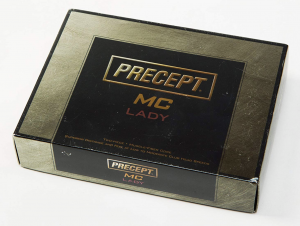
You could argue the Precept MC Lady was the ball that changed the way average golfers thought about compression. It was introduced late 1999 as strictly a value ($20 a dozen) ball designed for women with slower swing speeds, Precept really didn’t even market it. By late 2000 it set the golf world ablaze to the point of many shops having a hard time keeping them in stock—it was the number two selling ball at retail behind the $40/dozen Titleist Pro V1.
It was a two-piece ball that performed way above its price point and the softer compression kept spin down and created longer flying straighter drives that average golfers only dreamed of. Technically the Lady still exists today as the Laddie under the Bridgestone brand (Bridgestone owns Precept).
- LIKE275
- LEGIT25
- WOW9
- LOL10
- IDHT5
- FLOP10
- OB4
- SHANK11
Whats in the Bag
Max Homa WITB 2024 (April)
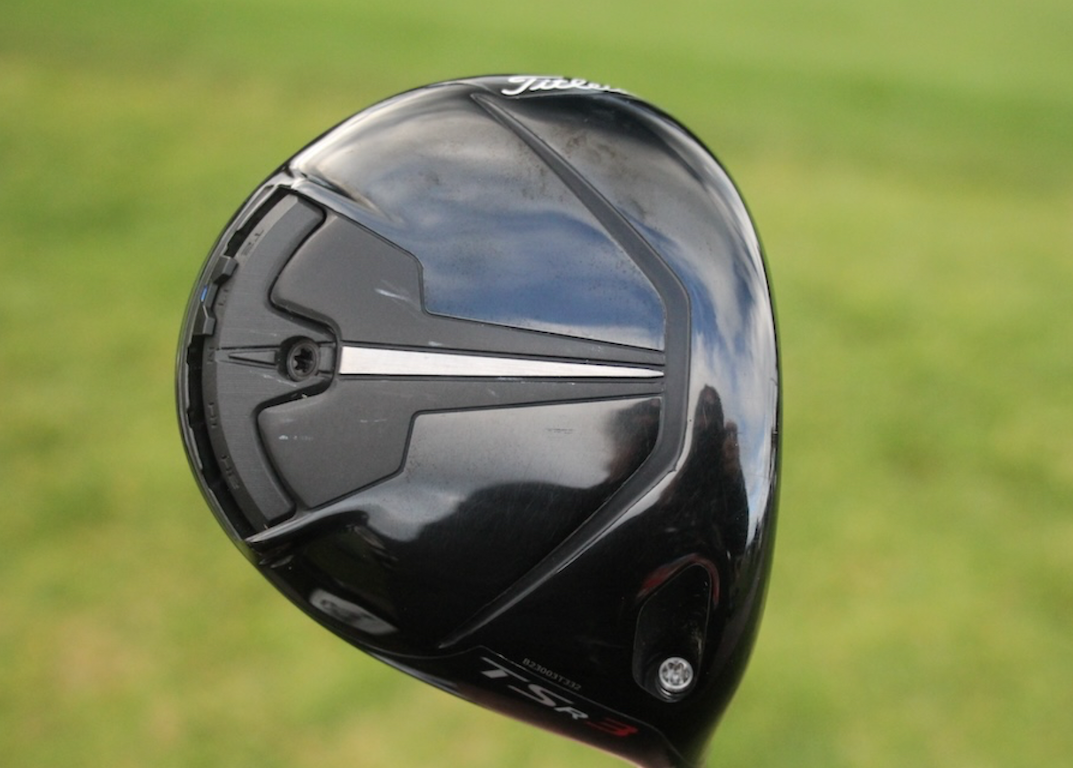
- Max Homa what’s in the bag accurate as of the Masters.
Driver: Titleist TSR3 (9 degrees, D1 SureFit setting)
Shaft: Fujikura Ventus TR Black 6 X
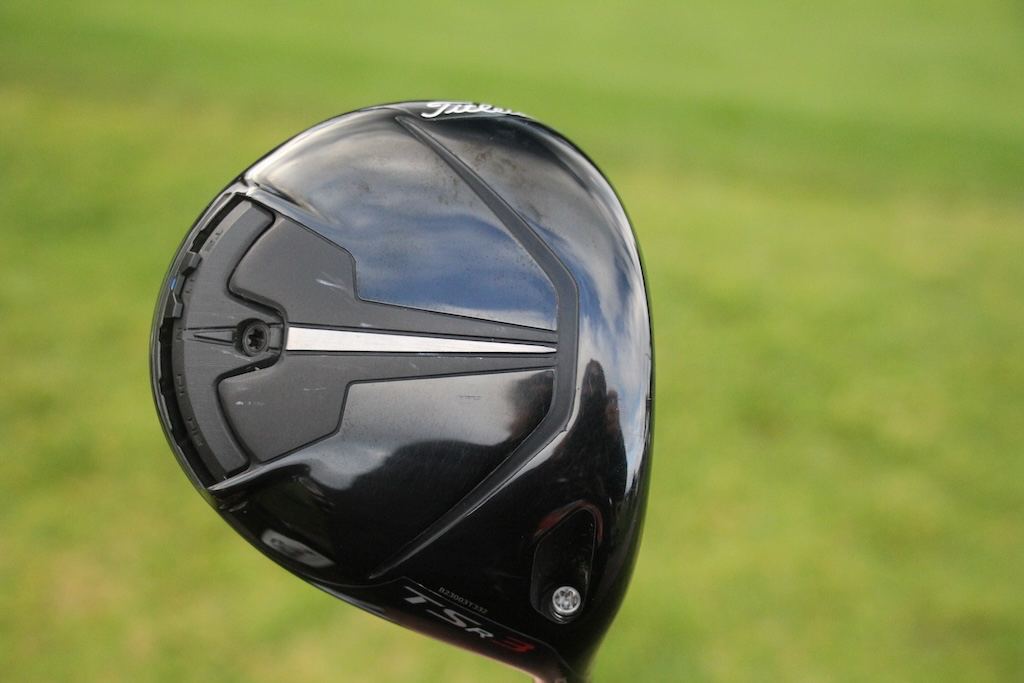
3-wood: Titleist TSR2+ (14.5 degrees, A1 SureFit setting)
Shaft: Mitsubishi Tensei 1K Red 80 TX
5-wood: Titleist TSR2 (21 degrees @19.25, D1 SureFit setting)
Shaft: Fujikura Ventus Blue 9 TX
Irons: Titleist T100S (4), Titleist T100 (5), Titleist 620 (6-9)
Shafts: KBS $ Taper 130 (4-9)
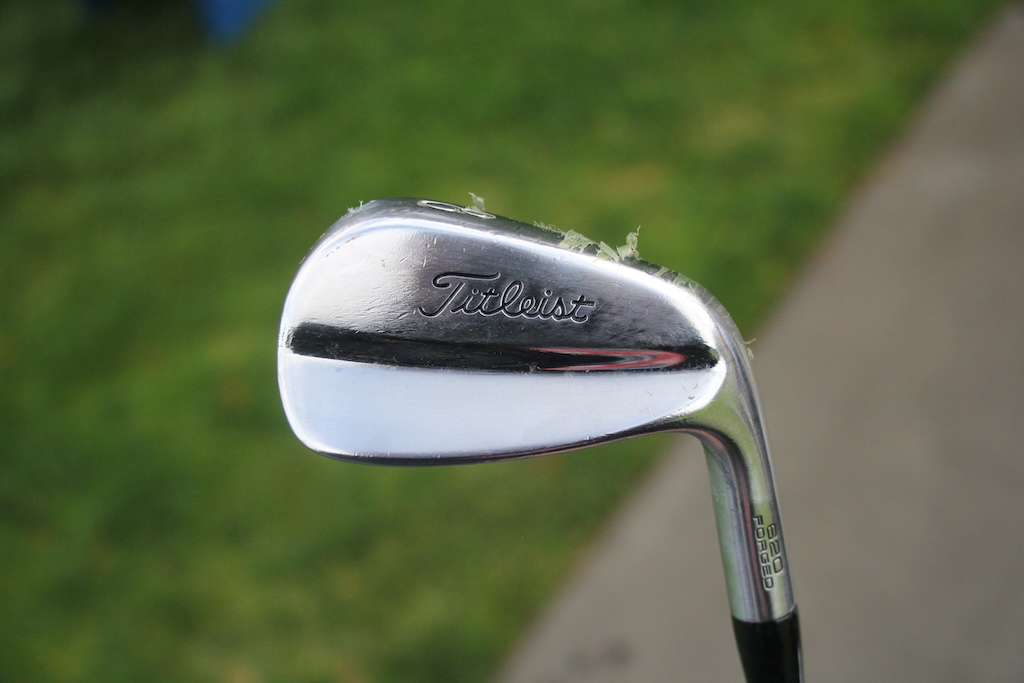
Wedges: Titleist Vokey Design SM10 (46-10F, 50-12F, 56-14F), WedgeWorks (60)
Shafts: KBS $ Taper 130 (46) KBS Hi-Rev 2.0 135 X (50, 56), KBS Hi-Rev 2.0 125 X (60)
Putter: Scotty Cameron T-5.5 Proto
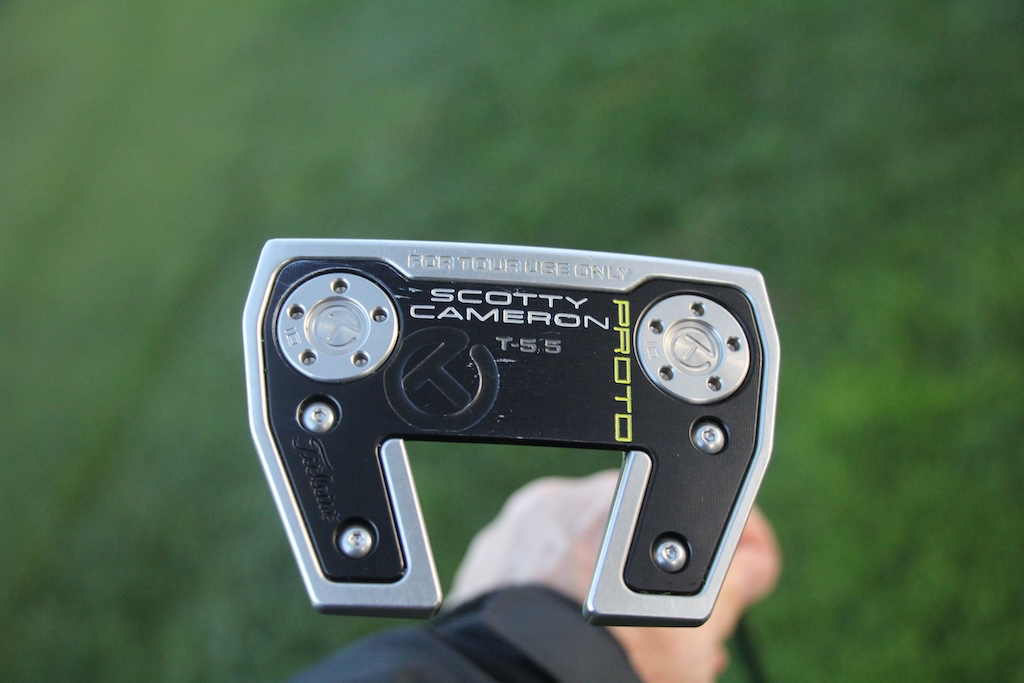
Grips: Golf Pride Tour Velvet Cord
Ball: Titleist Pro V1
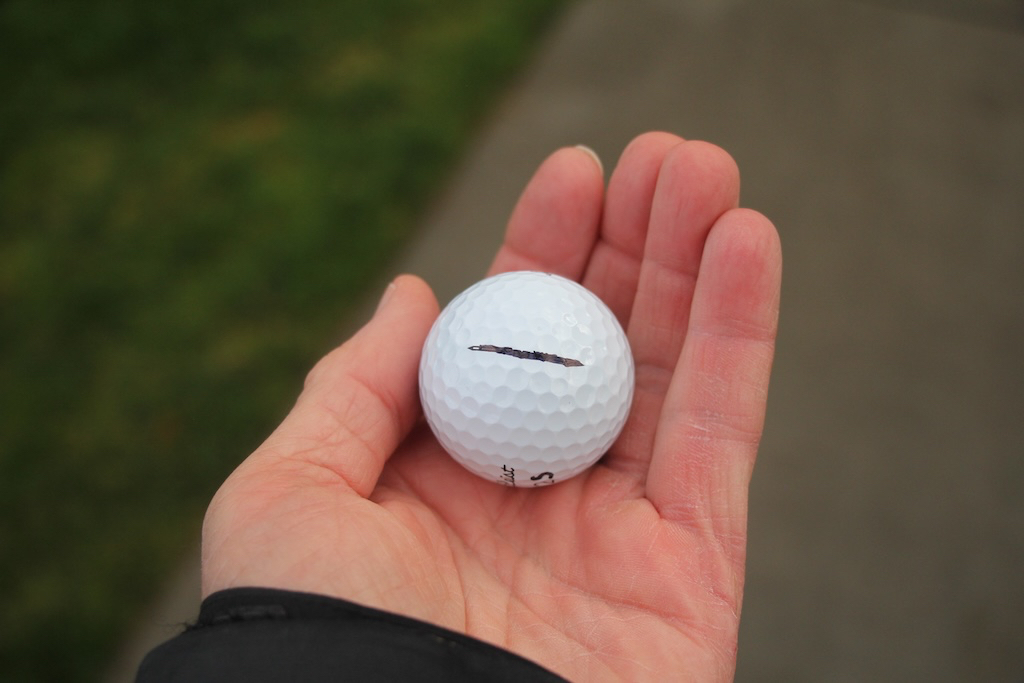

More photos of Max Homa’s WITB in the forums.
- LIKE7
- LEGIT0
- WOW0
- LOL0
- IDHT0
- FLOP0
- OB0
- SHANK1
Whats in the Bag
Bryson DeChambeau WITB 2024 (April)
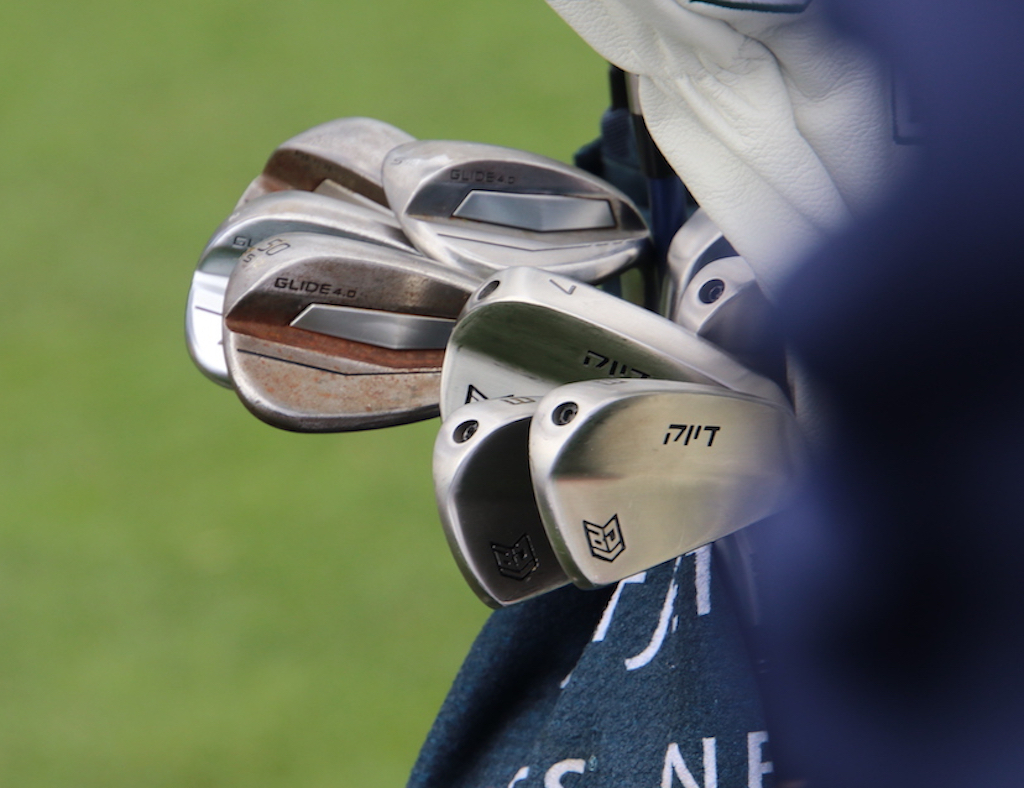
Driver: Krank Formula Fire Pro (6 degrees)
Shaft: Project X HZRDUS T1100 75g 6.5
Mini driver: TaylorMade BRNR Mini Driver (11.5 degrees @10)
Shaft: Project X HZRDUS T1100 75g 6.5
- Unconfirmed. We are working to gather details.
5-wood: Krank Formula Fire
- Unconfirmed. We are working to gather details.
Irons: Avoda Prototype (5-PW)
Shafts: LA Golf Prototype
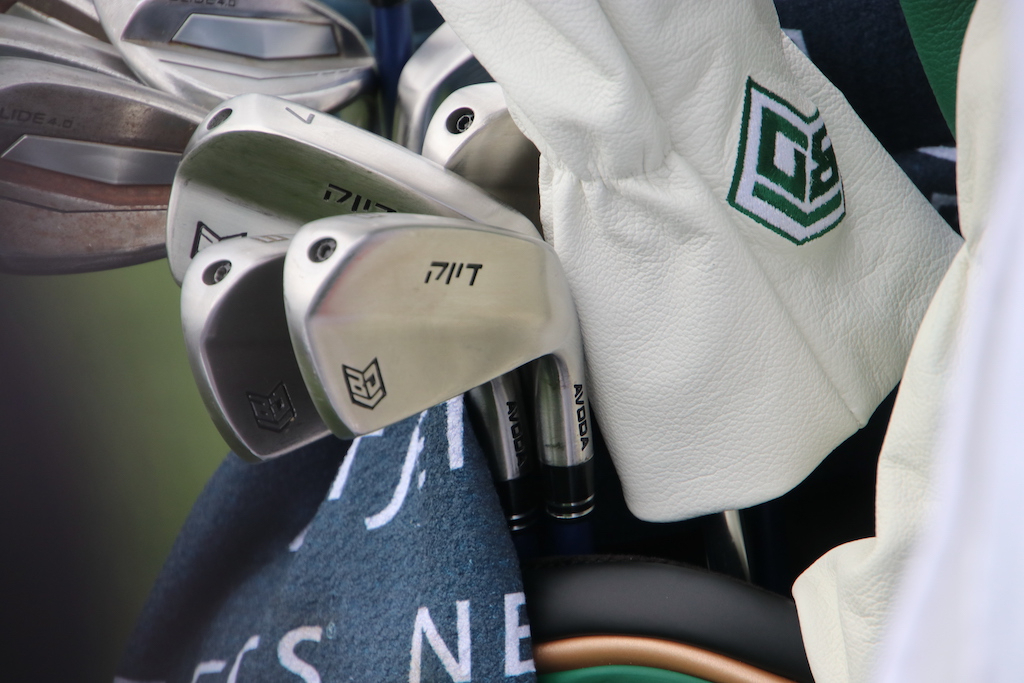
Wedges: Ping Glide 4.0 (46-12S @45, 50-12S, 56, 60)
Shafts: LA Golf Prototype
Putter: SIK Pro C-Series Armlock/LA Golf Proto
Shaft: LA Golf C2L-180
Grip: JumboMax JumboFlat 17
Grips: JumboMax UltraLight XL
Ball: Titleist Pro V1x Left Dash
- LIKE11
- LEGIT2
- WOW2
- LOL0
- IDHT0
- FLOP0
- OB0
- SHANK0
Equipment
Accra launches new GX wood and hybrid shafts

Accra Golf shafts have long been synonymous with fitting, and the new GX line of driver, fairway, and hybrid shafts continues that legacy.
Since 2004, Accra has been making high-end performance golf shafts that use the latest in materials and design philosophy. Their group of around 350 fitters are some of the best and most highly ranked in the world. While you might see other brands on professional tours more often, there are plenty of touring pros using Accra products and winning.
Accra’s new GX line of shafts is designed to offer a consistent and accurate shaft to a wide range of players. The GX line consists of 3 different shafts in driver, fairway, and hybrid designs.
The Accra GX shafts are designed for fitters to dial in golfers to the perfect shaft for their swing. Accra included a ton of technology into the GX line including their S3 profiling, DyMatch, and Constant Flex technology. DyMatch has been Accra’s quest to ensure that all shafts in a family feel and perform similar from driver to hybrid or iron shaft. Typically shafts get stiffer as they go up in weight, but Accra’s Constant Flex keeps the flex of the shafts consistent so fitters and golfers can dial in the weight that the golfer need without have to work around a stiffer or softer flex. Accra worked with Cool Clubs to build out its S3 Shaft Profiling system that not only allows a quick and easy EI profile of any shaft, it helps with quality control to ensure shafts come out of production exactly as they were designed.
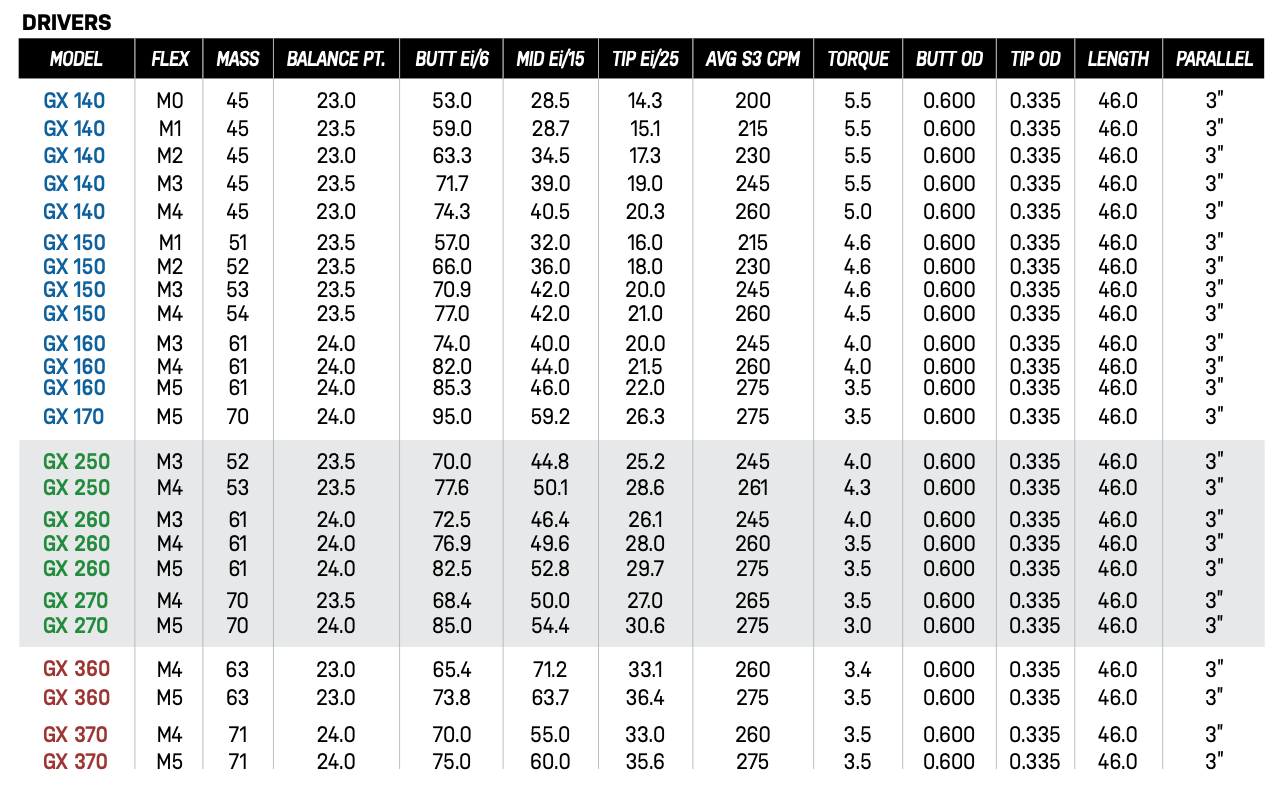
Accra GX Red 300 Series

GX Red is lowest launching and spinning option in the GX line. Driver shafts have fewer options with just the 360 and 370 models that come in at 63 and 71 grams. The GX Red is made for faster swinging, or stronger, players who require a stiff (M4) or x-stiff (M5) shaft for their swing. Fairway and hybrid models are also on the higher weight side with the fairway clocking in at 80g and 90g for the hybrid. Accra designed this series with one of the stiffest tip sections of any Accra shaft in the current line, and while it is built to control launch and spin, the Red 300 Series will still offer that smooth feel.
Accra GX Green 100 Series

If your swing usually works best with mid-launch and spin, then the GX Green 200 series might be the right shaft for you. Offered in more weight and flex options, you can get a GX Green in 52 grams and all the way up to 70 grams in regular, stiff, and x-stiff flexes. GX Green will give the player a smooth feel and transition from the handle down to the tip section while still providing great stability and consistency. Accra also focused on the energy transfer of this shaft, and golfers can see some increased ball speed compared to other shafts.
Accra GX Blue 200 Series

While the GX Blue 100 Series is the highest launching and spinning option in the GX lineup, it will still give golfers the control and consistency they need. Starting off at 40g, the GX Blue series puts an emphasis on lighter weight to allow players to swing the club faster, promoting more distance. Accra touts the stability of the GX 140 Blue driver shaft by stating that some long driver competitors have put it in play to try and gain every MPH they can. Matching fairway and hybrid shafts are both on the lighter side at around 60g for the fairway and 65g for the hybrid depending on the flex.
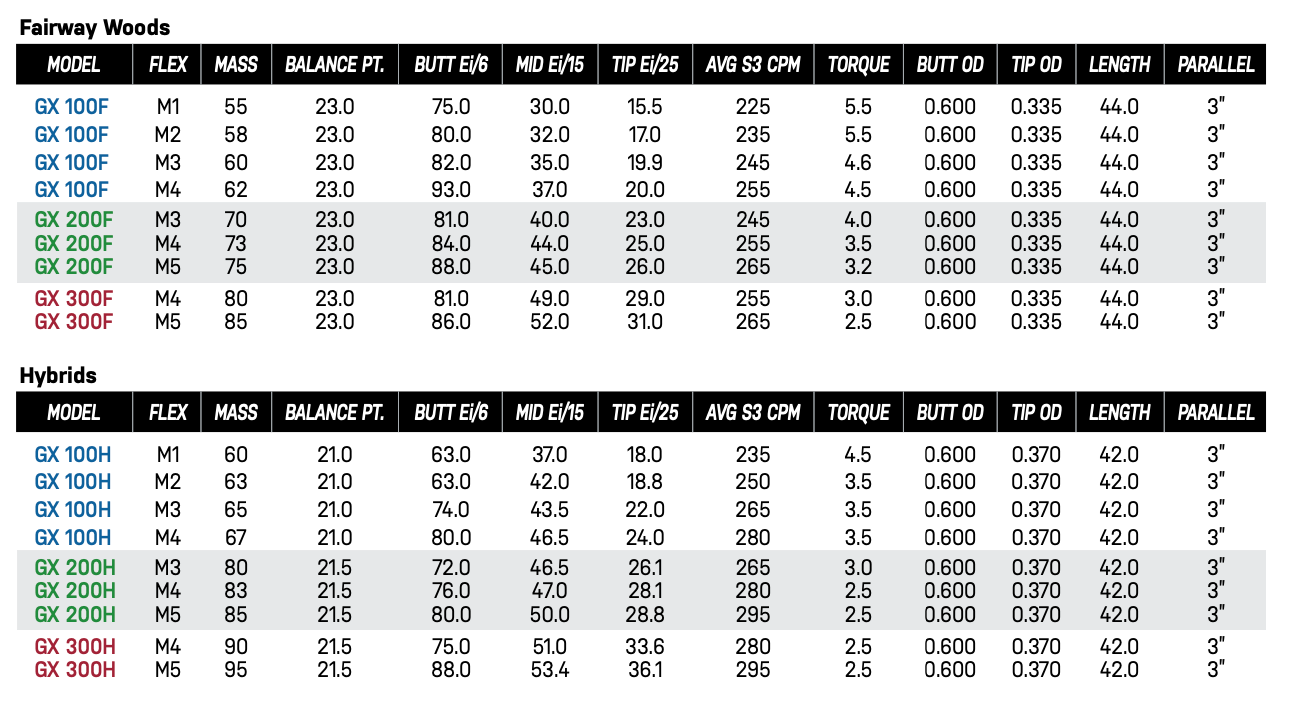
- LIKE1
- LEGIT0
- WOW0
- LOL0
- IDHT0
- FLOP1
- OB0
- SHANK0
-

 19th Hole6 days ago
19th Hole6 days agoDave Portnoy places monstrous outright bet for the 2024 Masters
-

 19th Hole2 weeks ago
19th Hole2 weeks agoThings got heated at the Houston Open between Tony Finau and Alejandro Tosti. Here’s why
-

 19th Hole7 days ago
19th Hole7 days agoTiger Woods arrives at 2024 Masters equipped with a putter that may surprise you
-

 19th Hole2 weeks ago
19th Hole2 weeks agoReport: Tiger Woods has ‘eliminated sex’ in preparation for the 2024 Masters
-

 19th Hole1 day ago
19th Hole1 day agoTwo star names reportedly blanked Jon Rahm all week at the Masters
-

 19th Hole2 weeks ago
19th Hole2 weeks agoAddiction, spinal fusion, and scam artists – Everything Anthony Kim revealed in candid interview with David Feherty
-

 19th Hole2 weeks ago
19th Hole2 weeks agoAnthony Kim says doctors told him that he ‘may not have much time left’ ahead of LIV return
-

 19th Hole19 hours ago
19th Hole19 hours agoNeal Shipley presser ends in awkward fashion after reporter claims Tiger handed him note on 8th fairway









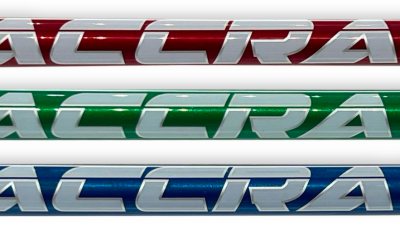



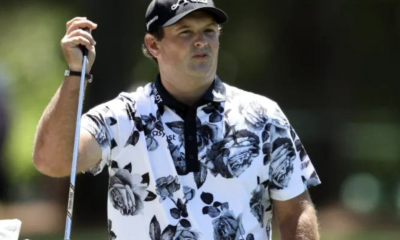












Ewald
Oct 17, 2020 at 6:33 am
Anyonr know what the Strata tour ace specs were ie construction materials, compression etc?
Joe
Mar 20, 2020 at 10:48 am
Dating myself, but I recall as a beginning golfer the Penfold Ace, the Acushnet Club Special,and the Spalding “Green Eyes” ( a green dot on either side of the number), which were always in plentiful supply in a large glass jar on the pro shop counter
MikeB
Mar 20, 2020 at 10:45 am
NIKE DD & TW, although the DD was the better ball of the two. Callaway SR series 1,2 and 3. SR1 being the softest and SR3 being the firmest. Played the SR3 up to a year and a half ago when my hoarded supply ran out. Dicks kept selling them for $20/doz, had more dozens of them than toilet paper!
ChrisJ
Mar 20, 2020 at 9:55 am
What about the Tour Edition that was played by Greg Norman that would spin off the planet?
Also the Precept EV Extra Spin, and the Top Flite Z Balata
DAVID J. CLEMENT
Mar 20, 2020 at 9:54 am
Going back a bit further – to the 1960’s and ’70’s – I was always glad to find a MaxFli “Blue Max” out on the course as a kid. Remember that the George Peppard movie was out then about WW1 German fighter aces?
Steve Cantwell
Mar 20, 2020 at 9:15 am
Things I recall…the Precept Lady was a great cold weather ball. Balata balls had wonderful feel off the club face (putter included)….but “thinning” one would result in a big ol’ smile (cut). Balata balls could also become out of round after 36 holes of golf. Gosh, we here making comments are old!
Joe
Mar 20, 2020 at 10:38 am
Some of those balata balls were out of round tight out of the box
joro
Mar 20, 2020 at 11:01 am
The Black Maxfli was one that was a great ball if you got a good one, but some were so out of round they looked like stones.
David Arbuckle
Mar 20, 2020 at 8:47 am
Nice story and can relate to those remembering even more balls. Did anyone ever appreciate the Dunlap ball with the different divots? It corrects in flight! I have arguably the largest collection of logo balls and have given away more than 15,000 balls to friends, charities and anyone who respects the game, and really enjoy the difference in the various balls. PS, am not a good enough golfer to get mad.
Jeff
Mar 19, 2020 at 3:35 pm
This list could be a lot longer. Where are the Precept U-Tri Tour, Callaway Hex Red; Maxfli M3, Strata Tour, TM TP Red, Nike ONE Gold, Top Flite ZBalata?
15th Club
Mar 19, 2020 at 2:50 pm
You do a great job on these “Remember this old equipment” stories. They are always well done and entertaining.
This is no exception.
But I have to say that apart from some curiosities with branding and marketing, and some things that had nothing to do with Tour golf (like the Precept Lady) golf balls have always been to me the least interesting, least comprehensible things in the game.
Acemandrake
Mar 18, 2020 at 10:00 pm
I’ll always remember being pleasantly surprised by the Wilson Staff ball in the 1990’s.
They were great and I couldn’t understand why no one talked about them.
Rich Douglas
Mar 19, 2020 at 2:12 am
They had one version labeled “Balata,” but I’m pretty convinced it was artificial, not real, balata. Imagine a two-piece ball with a balata cover. Oh, my!
juanny
Mar 18, 2020 at 9:50 pm
Tour Prestige was a great ball too despite getting shredded by the third hole.
Loved the Stratas and the Wound Maxfli Rev.
I found two dozen inergel’s in my garage a few weeks ago, sans plastic cases, and threw them on ebay and they sold for $25 which I thought was strange.
Brandon
Mar 18, 2020 at 6:10 pm
What was the deal with those goofy ping balls that were 2 different colors and felt like rocks?
Swirley
Mar 18, 2020 at 8:45 pm
I had one that was Green and Neon Yellow. Needless to say, i hit one in the rough that landed neon yellow side down.
Big Earl
Mar 18, 2020 at 3:03 pm
Cool article! Always fun to get nostalgic.
Maxfli revolutions were my jam back in the early days. Also finding a DT wound 80 or 90 was really exciting!
Nihonsei
Mar 20, 2020 at 8:47 am
+1 for Revolutions and the side stamp predecessor to lining up for putts perfectly. Do I remember an arrow at least on one side of the Revolution print?
Gunter Eisenberg
Mar 18, 2020 at 12:58 pm
As I remember correctly, the Maxfli Revolution solid wasn’t as revered as the original wound version. Most of the technology that you see in Callaway’s current tour level balls are derived from Strata and Ben Hogan when Callway bought Top Flite in 2003 and their patents.
BillyG
Mar 18, 2020 at 12:57 pm
Lady. Yeah!